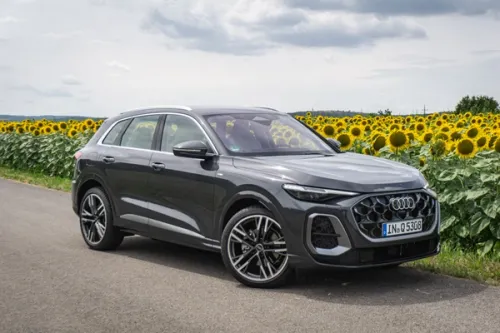Local News: Shell Advocates Safe Holidays for All
Targeted at independent road travellers, the pocket list of tips from Shell will help holiday makers stretch their road trips through easy fuel-saving steps.

As the school holiday approaches, how about embarking on a self drive vacation to the underexplored? In conjunction with a 13-week promotional campaign to win a private holiday for two, Shell has developed a list of top 10 self-drive travel tips. Targeted at independent road travellers, the pocket list of tips will help holiday makers stretch their road trips through easy fuel-saving steps.
1. Plan your journey. Develop a structured self-drive itinerary and share important details with your family members
Planning your journey in advance will help cut down your total time spent in the car navigating an unfamiliar location, which is the easiest way to conserve fuel. A well planned self-drive itinerary will enable you to identify the various pit-stops and petrol stations you will come across.
In turn, it allows you to coordinate your refuelling and driving breaks and keep on track. Choosing the correct fuel is also an important consideration. When combined with the Shell FuelSave Tips, Shell fuels with fuel economy formula can help you reduce your consumption and fuel costs by helping you get the most out of every drop of fuel.
2. Select the right car and ensure it is ready for long haul driving
It is recommended that you select the right car for your driving journey. For example, opt for the Sport Utility Vehicles (“SUVs”) if you expect to travel through snow, rain, stones or mud. You should also ask to inspect the car engine and air filters to ensure that they are clean. Clean engines and unclogged air filters help improve fuel economy.
In addition, ensure your tyres arecorrectly inflated so they are safer and last longer. A tyre that is under inflated by 10% can reduce fuel economy, while an under or over inflated tyre is also more susceptible to failing.
3. Travel light. Avoid carrying excess weight
You may be surprised, but every extra pound or kilogram matters and affects your fuel efficiency. So think about what you really need to pack into your boot and back seat when preparing for your journey. Clear unnecessary items that just add weight to your vehicle.
4. Drive smoothly
Your driving style and behaviour can make a difference to how much fuel you use. Stretch your journey and save more fuel on the roads by practicing fuel-saving driving habits. Aggressive driving can use as much as a third more fuel than smooth driving. Avoid accelerating or braking too hard and try to keep your steering as smooth as possible.
5. Use higher gears and avoid over revving
The higher gear you drive in, the lower your engine speed is, which can improve fuel efficiency.
So change up a gear whenever you can, without labouring the engine. Change gear in good time when you pull away or when you’re accelerating. Never ‘redline’ the rev counter.
6. Conserve momentum and keep your distance
Think ahead when you’re driving. For example, slow down early to let traffic lights change rather than stop completely, or speed up a little before you reach the foot of a hill. Leave a sensible distance between yourself and the car ahead to give you ample time to brake evenly.
7. Use cruise control
Using cruise control on major roads helps you maintain a constant speed and, in many cases, will improve fuel consumption.
8. Maximise your time on the move. Avoid excessive idling in the car
Idling gets you nowhere but still burns fuel. Turn the engine off when you’re in a queue, or waiting for someone, until you need it. As a rule if you stop for over 10 seconds, switch off your engine. Avoid idling altogether if you can.
A Global Positioning System (“GPS”) is every road traveller’s saving grace and can help reduce your need to stop to ask for directions. Think about having one installed in your car before you set off on your journey. In addition, ensure that you and your travel partners have a road map and a pocket translation guidebook each at all times. This is especially useful if you are travelling in a non English-speaking country and seeking for help.
9. Stay cool, but not too cool
Use air conditioning sparingly. If you are driving in a cooler climate, think about whether you really need air conditioning. Air conditioning puts added strain on the engine and uses fuel to operate, so limit use to particularly hot days. On high temperate days consider using the fan instead. However, do not compensate for this by rolling down your windows completely. Wind blowing through an open window will slow you down. As a result, you may put your foot down harder, using more fuel.
10. Adhere to the speed limits of the road
When driving in foreign land, respect the speed limits of the road at all times. Not only is itunsafe, driving at high speeds means more wind resistance which forces you to consume more fuel. Ideally maintain a constant speed and use higher gear and cruise control.
Credits: wilswong


Get the Best Price for your used car
from 500+ dealers in 24 hours

- Convenient and Hassle-Free
- Consumer Protection
Transparent Process
With No Obligation








